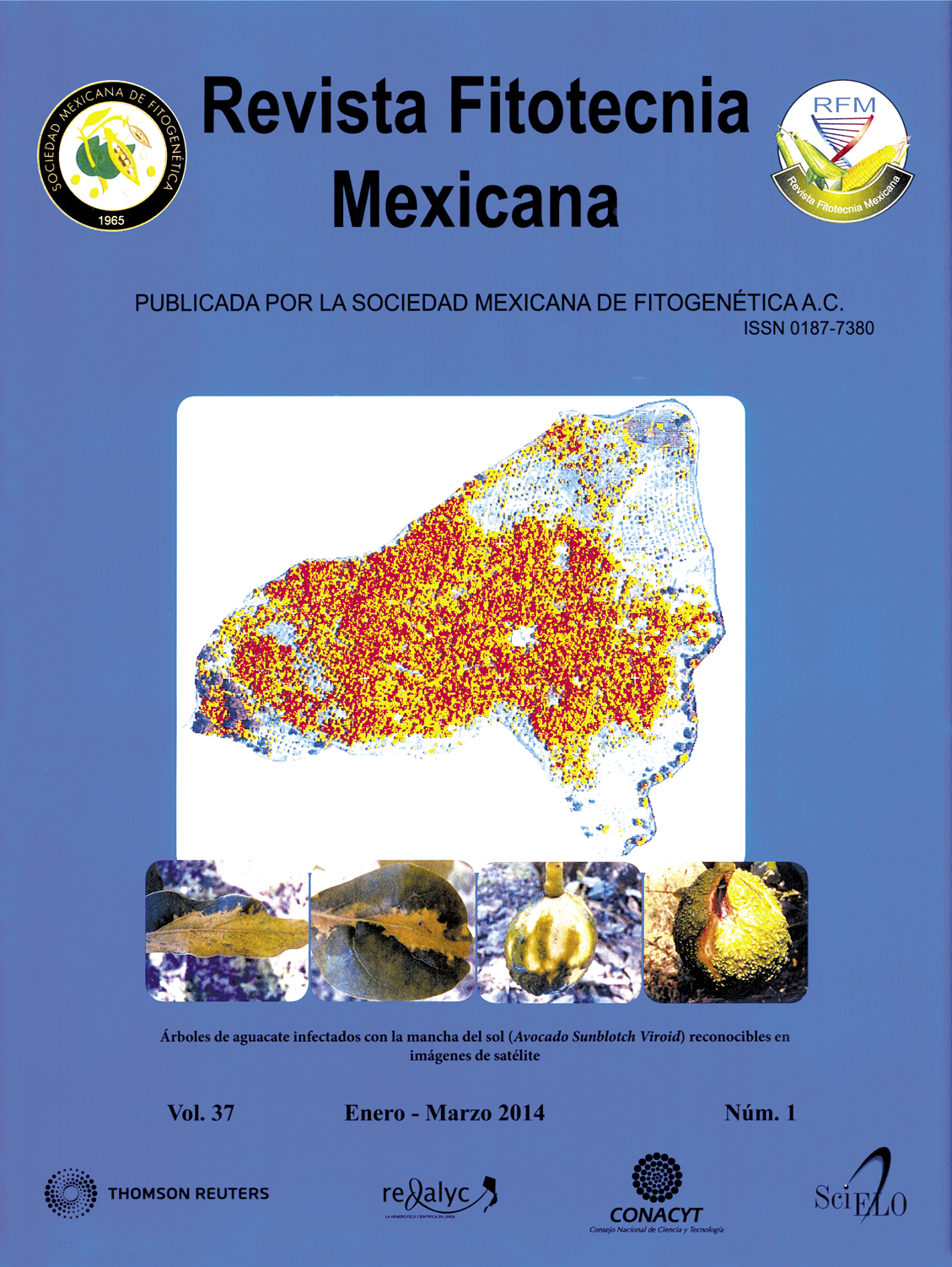TOLERANCE OF GRAIN SORGHUM TO TWO HERBICIDES
Main Article Content
Abstract
In northern Tamaulipas, México, herbicide toxicity is a common problem in grain sorghum (Sorghum bicolor L. Moench.) caused by inappropriate herbicide dosages and inadequate synchronization of spraying with crop growth stages. Herbicide toxicity affects crop growth and may reduce yield. From 2006 to 2008, the response of four grain sorghum hybrids (‘P-82G63’, ‘RB-Patrón’ , ‘DK-54’ and ‘Ámbar’) to application of two herbicides (prosulfuron and 2,4-D) at two dosages (1X recommended dose: prosulfuron at 22.8 g i.a. ha-1 and 2,4-D at 720 g i.a. ha-1; and 1.5X recommended dose), at two phenological stages (V5, 5 expanded leaves; and V8, 8 expanded leaves) was tested in field trials. No significant differences were observed among genotypes in response to herbicide treatments, but there were significant effects of dosages and herbicides. Prosulfuron 1X applied at V5 caused only a light toxicity of 6 % that reduced crop height. Height reduction was more pronounced (19 %) when the 1.5X dosage was applied at V8 stage; however, no yield reduction was observed in any case. 2,4-D applied in plants at V5 and V8 at 1X and 1.5X caused significant toxicity from 12 to 24 %, and reduced grain yield from 12 to 16 %, because of a decrease in the number of grains per panicle. Thus, 2,4-D spraying on sorghum at those stages should be avoided. For sorghum, prosulfuron is more suitable than 2,4-D, because it causes less toxicity.

